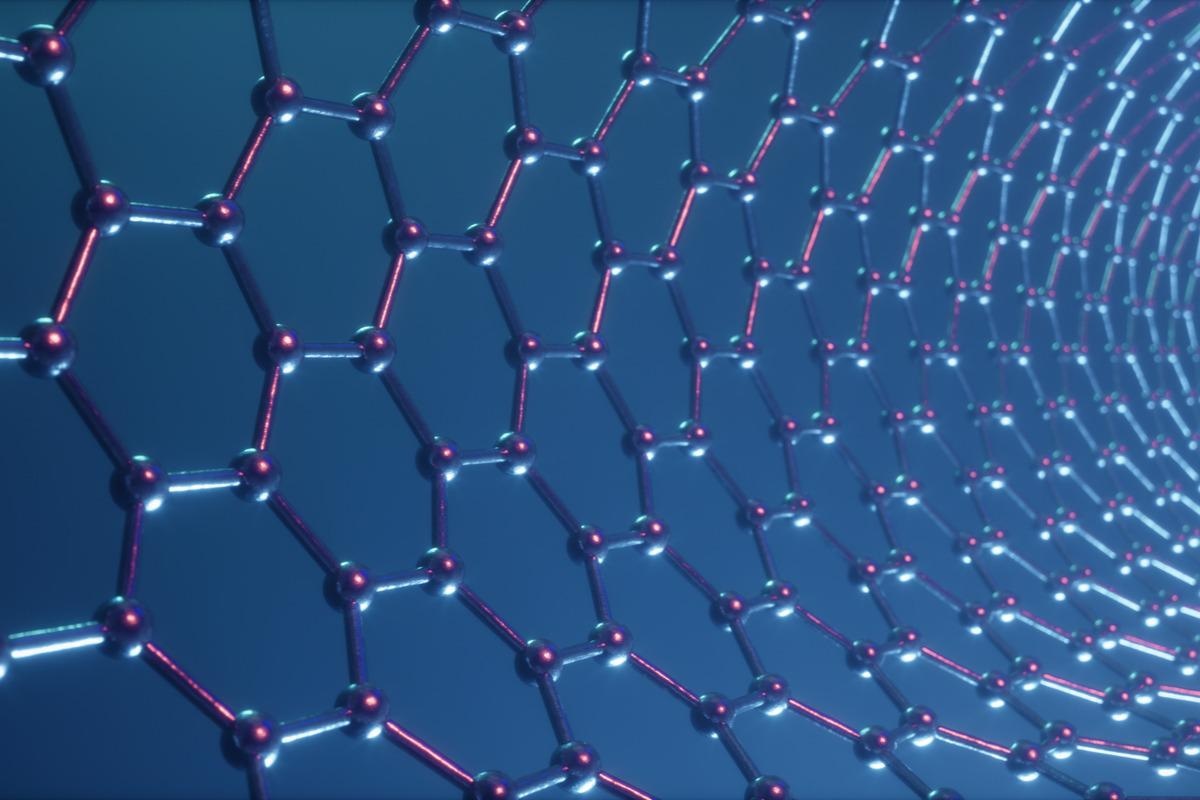 By Neha MathurReviewed by Danielle Ellis, B.Sc.Jan 20 2022
By Neha MathurReviewed by Danielle Ellis, B.Sc.Jan 20 2022In a study published in the latest issue of the journal Materials Today Advances, a team of researchers explored the utilities of graphene (GO) and its derivatives in combating the severe acute respiratory syndrome coronavirus 2 (SARS-CoV-2), highlighting its applications in the biomedical domain.
 Study: Potentialities of graphene and its allied derivatives to combat against SARS-CoV-2 infection. Image Credit: Rost9/Shutterstock
Study: Potentialities of graphene and its allied derivatives to combat against SARS-CoV-2 infection. Image Credit: Rost9/Shutterstock
GO has unique mechanical, electrical, and piezoelectric capabilities and exhibits antiviral properties due to the presence of several oxygen-containing functional groups, all of which make it an ideal choice for making products for containing or treating SARS-CoV-2 infections. Notably, not only GO nanoparticles, but GO-derivatives, such as reduced graphene oxide (r-GO), fullerene, graphene quantum dots (GQDs), carbon nanotubes (CNTs), etc. are quite useful against SARS-CoV-2.
There is an urgent need to develop diagnostic devices and treatment strategies to combat the SARS-CoV-2-induced pandemic. To this end, this research paper evaluates the utilities of GO and its derivatives in the fabrication of biosensors, personal protection equipment (PPE) kits, 3-D printing, and antiviral coatings, all of which may help to combat coronavirus disease 2019 (COVID-19).
Evaluating all possible biomedical applications of graphene
Given unique optical and electrochemical behavior, excellent electrocatalytic activities, and thermal, mechanical, and electrical properties of GO and its derivatives, they have been used to design effective biosensors to detect SARS-CoV-2 in patient blood and saliva samples. The authors highlighted a research work wherein a biosensing platform used graphene-oxide-glazed double interdigitated capacitive (DIDC) to detect the spike protein (S1) of SARS-CoV-2. This electroactive immune-sensing platform was rapid, highly sensitive, and showed a wide detection range. It exhibited selectivity against blood-borne antigens and could stand for almost ten days at 5°C. Therefore, this biochip could be potentially used as a portable, rapid point-of-care (POC) method for early diagnosis of SARS-CoV-2 using clinical samples.
The researchers also elaborately described a six-step process to synthesize a graphene-based PPE-kit with a high antimicrobial and antiviral efficiency. Further, they described the use of laser-induced graphene (LIG) technique in the fabrication of GO-coated self-sterilizing, re-usable face masks of the highest quality. In a study by Huang et al., the LIG-deposited face masks have shown 81.57% inhibition against the E. coli bacteria. Also, Guardian G-Volt face masks based on LIG techniques have effectively confined microbes by filtering out ~99% contaminants of more than 0.3 μm.
The researchers also described a graphene-based three-layered mask, ideal for people at high risk of viral exposure, such as healthcare and other frontline workers. In this mask, the graphene layer served as an antibacterial filter, the second polypropylene-based fabric layer hindered liquid and air particles, and the innermost layer of 100% cotton due to the highly hydrophilic nature of cotton, blocked viruses with high efficiency, compared to other fabrics.
Unfortunately, SARS-CoV-2 survives for a prolonged time on diverse surfaces, such as on plastic for over 72 h, on the tissue for approximately three hours, and seven days on a clinical mask. As GO/rGO-SO3 composites have shown inhibitory effects against a wide range of bacteria and viruses, including enveloped and non-enveloped viruses and DNA- and RNA-containing viruses, their use is highly recommended in hospitals, laboratories, operation theatres, incubators, ventilators, and public places, to prevent the spread of SARS-CoV-2.
3D printing using composites of graphene-related materials (GRMs)-metal or GRMs-polymer as base materials having natural antiviral properties could also aid in making PPEs such as face masks, respirators, and face shields plus viral swabs, and ventilator parts.
Graphene’s cytotoxicity
The authors reviewed the cytotoxicity of GO and its derivatives and suggested that they are not as hazardous as other carbon materials, making them feasible as next-generation antivirals. Further, GO’s cytotoxicity was reduced when in close proximity to serum proteins, thus indicating that while it is poisonous to bacteria, it could be effective as a new-age antibiotic.
Other biomedical applications of graphene nanoparticles could be in bone fixation devices, scaffolds, and implants in orthopedics. However, clinical use would mandate more safety testing and research to confirm their biocompatibility with human tissues.
Conclusions
The use of medical components and PPEs based on graphene-based materials is highly recommended as these products are lightweight, offer protection from UV rays, and have good antibacterial activity and thermal and electrical conductivity. Further, graphene-based coatings and surfaces could control the viral spread over high-contact segments because of their remarkable antibacterial activity.
To date, graphene-fabricated fabrics have not become suitable for large-scale manufacturing. However, studies examining the possibility of modifying graphene-based clothing could ensure its sustainability and comfort.
In the future, researchers should find ways to resolve the limitations of graphene-based nanomaterials and modify their properties, making it possible for commercial manufacturing of GO-based products on a large scale. However, this should be done responsibly, factoring in the adverse outcomes of biomedical pollution such as open disposal of PPE kits, diagnosing kits, medical tools, and masks.